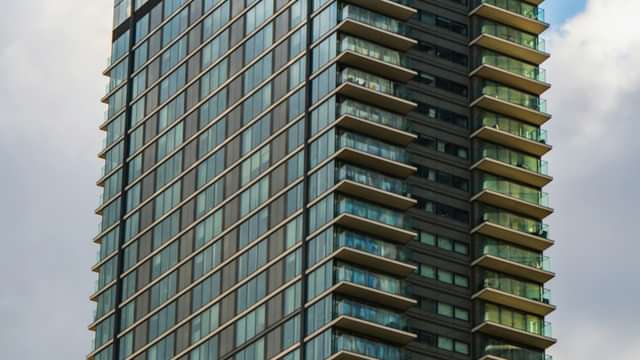The Commercial Rent (Coronavirus) Bill (Bill) and a new Code of practice for commercial property relationships following the COVID-19 (Code) were finally published on 9 November 2021. The Bill is now proceeding through Parliament, and is scheduled to become law in spring 2022. The Code – albeit non-binding – took effect immediately. We set out below our comments on the application of the bill, on the assumption that it is given Royal Assent in its current form, in respect of the referral of a dispute on payment to arbitration for certain arrears in circumstances where those arrears accumulated during periods of which either the whole or part of a tenant’s business or its premises were subject to a closure requirement.
What arrears will be caught under the Bill?
a. Those which are a “protected rent debt”. This is defined in the Bill as including rent, service charge, insurance charges and interest due under a business tenancy.
b. Those for the period where protected rent debt fell due from 2pm on 21 March 2020 for the period during which the whole or part of the premises/ tenant’s business were closed due to:
- coronavirus regulations; or
- a “specific coronavirus related” restriction, which is defined as a restriction on the way that the tenant’s business (or part of it) was carried on, or the way in which its premises or part of it was used – e.g. where premises could open but where regulations prevented them from opening at full capacity;
- and in either case to a longstop date of 11.55pm 18 July 2021 (England) or 7 August 2021 (Wales).
c. The Code includes a summary of the ring-fenced periods and the businesses affected. Restaurants offering a takeaway only service that were closed for sittings due to the regulations will seemingly be caught in the above period. A wide variety of other commercial tenants, such as hoteliers, may be able to benefit from the Bill. However, essential retailers whose premises have suffered from a loss in footfall due to the location of the premises will not benefit. As matters stand, tenants should at the very least be paying rent which falls due attributable to the period after 18 July 2021.
What can the arbitrator do?
a. Dismiss an application at the outset if:
i. the arrears in question are not protected rent debt or for the period of protection; or
ii. the tenant’s business is not viable or would not be viable even if the tenant is given relief from payment, having regard to the tenant’s assets and liabilities, previous payments made to the landlord, the impact of the pandemic on the tenant’s business and any other relevant financial information provided.
b. Write off all/part of the debt, including some or all of the interest; and/or
c. Give the tenant time to pay the whole or any part of the debt, including by instalments up to a maximum of 24 months.
How does it work?
a. Either landlord or tenant can seek a referral. A referral must be made within six months of the Bill gaining Royal Assent. Parties are still expected to negotiate to try to reach an agreement before making a referral.
b. Prior to a referral, the intending referring party must give notice to the other party. The respondent is entitled to submit a response within 14 days of receipt of notification of the intention to refer the dispute to arbitration (and the referral cannot be made within that time). If no response is received within 14 days, the referral to arbitration cannot take place until 28 days have passed since the notification was given.
c. When making a referral, the referring party should make a formal proposal to resolve the dispute, supported by evidence, and pay the arbitrator’s fee. Currently, the fee amount is unknown. There are provisions for the parties subsequently to make formal counter-proposals, and some time periods can be extended by agreement.
d. A public hearing can be elected by either party, in which case the arbitrator will seek to hold one within 14 days of receiving a request. Otherwise the arbitrator will decide the matter on paper.
e. The arbitrator’s award will be binding. It will be within 14 days of the hearing and based on whichever of the party’s formal proposals is most consistent with the principles set out in the legislation.
What are the principles?
a. These are set out in the Bill and added to in the Code. First, the financial circumstances of both parties should be considered. An arbitral award should either be aimed at preserving a viable business, or if the business is not currently viable, restoring and preserving it to viability, but only to the extent that that is consistent with also preserving the landlord’s solvency. The tenant should however otherwise be required to meet its obligations regarding the payment of the protected rent in full and without delay. Annex B to the Code gives a detailed list of factors which might be taken into account when considering tenant viability.
b. When considering the viability of the tenant’s business or the landlord’s solvency, the arbitrator is specifically required to disregard anything which a party has done to manipulate their own financial affairs in order to improve their financial position in advance of the arbitrator’s determination.
c. A tenant is not expected to take on more debt or to restructure its business in order to pay its rent. Given that pity may only be taken on a landlord if it risks insolvency on the basis of a tenant’s non-payment, a landlord may however be expected to take on more debt or restructure its business to support the tenant.
d. Tenants who have paid their rent in full, or who have reached compromises with their landlords previously and settled (or written off) protected rent debt, do not benefit from the legislation.
e. The Code also includes suggested behaviours to be adopted by landlords and tenants. They should attempt to collaborate as “economic partners” not opponents, act reasonably and responsibility, and aim for a swift resolution for, inter alia, the benefit of the post-COVID 19 economy.
What about existing claims?
a. The Bill will impose a moratorium which prevents the landlord taking the following remedies in relation to the protected debt during the moratorium period:
i. Issuing a debt claim in court;
ii. Using CRAR;
iii. Forfeiting a tenancy; or
iv. Using a tenant’s deposit to settle arrears (or requiring them to top up a deposit previously used to settle protected debt).
b. The moratorium period will commence on the date on which the Act is passed and will either end six months’ after that date or, if later and if arbitration proceedings are commenced within that six-month period, the date on which arbitration proceedings are concluded.
c. Either party to debt recovery proceedings issued by a landlord against a tenant on or after 10 November 2021 relating to protected rent debt can apply to the Court to stay the proceedings to enable the resolution of the dispute to be resolved (by arbitration or otherwise). The Court must stay the proceedings if it is satisfied that they relate to a protected rent debt.
Comment
After months of speculation, the publishing of this draft bill finally offered some welcome clarity regarding what the government intends to do next. It represents an unusual foray by the government into commercial parties’ relationships, given that it will likely involve the tearing up of the terms of some freely negotiated leases.
How will this impact existing disputes? There is a distinct lack of guidance in the Bill regarding how parties should proceed with proceedings issued before 10 November 2021. We have noticed that many tenants, who can pay but have refused to pay, have promptly settled their arrears on finding that they will struggle to argue that any relief is necessary in order to protect their viability. Others are keen to argue that proceedings should be stayed pending with the introduction of this legislation, in order to allow them further time to negotiate. While the relatively tight time period for the closure of the arbitration scheme does mean that there is an end in sight, if flexibility in existing claims is granted payday for some landlords could still remain far away.
As drafted, we question whether the scheme applies to intermediate landlords, i.e. who are not themselves in occupation of commercial premises, but who receiving rent from an undertenant.
While the businesses of commercial occupiers come in all shapes and sizes, there is an undeniable underlying bias in the legislation in favour of encouraging the viability of businesses of tenants, likely at the expense of the viability of the businesses of some commercial landlords.




































































































